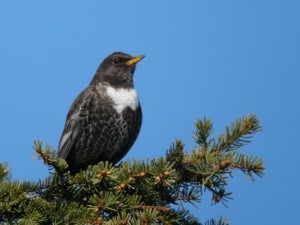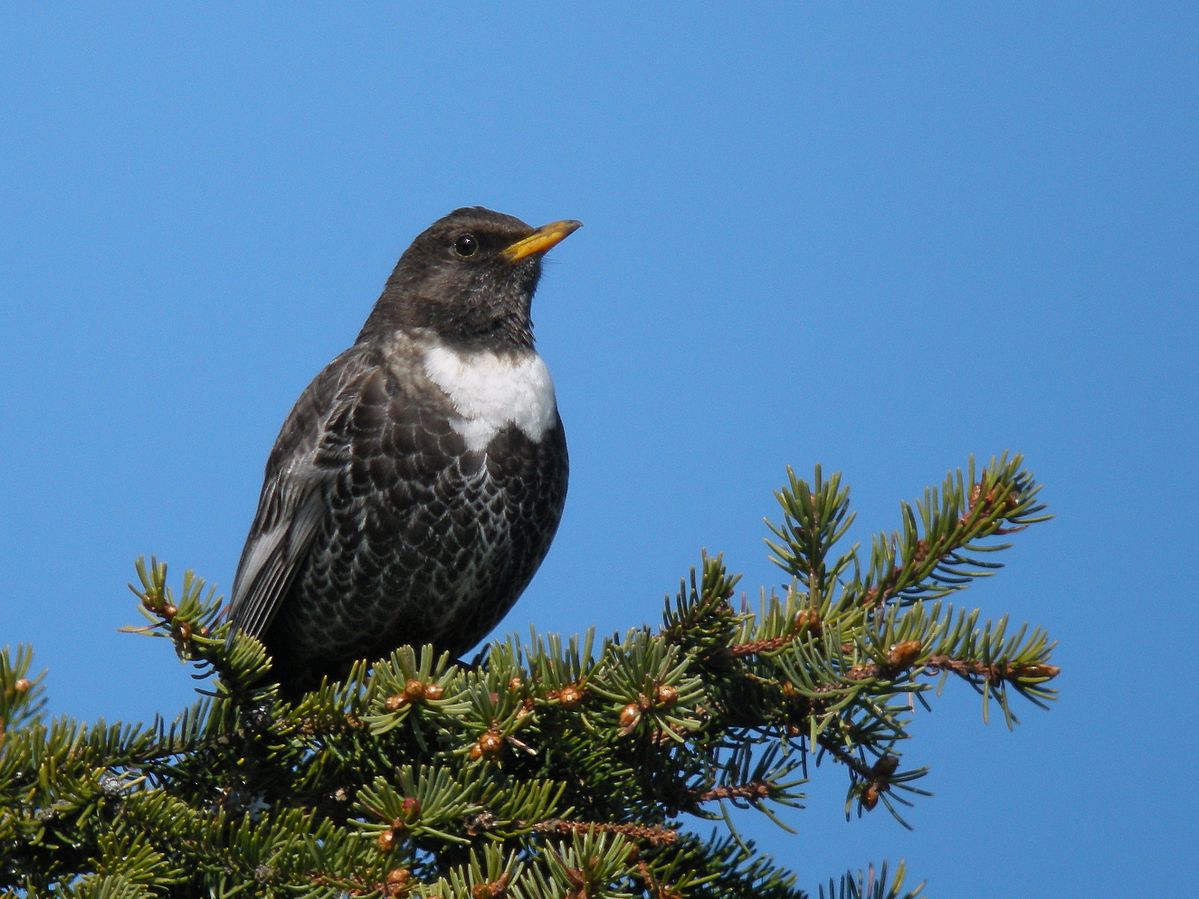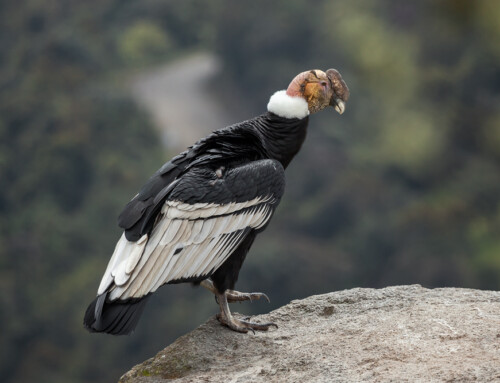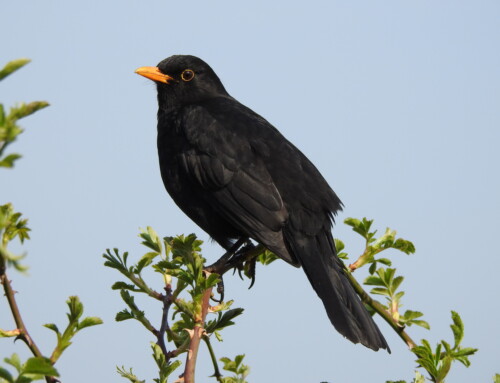 LINKED PAPER
LINKED PAPER
Climate and land‐use change drive habitat loss in a mountain bird species. Fumy, F., & Fartmann, T. 2021. IBIS. DOI: 10.1111/ibi.12954. VIEW
The future of the Alpine Ring Ouzel (Turdus torquatus alpestris) is not looking bright. Take, for example, the German population. This country houses between 2600 and 5000 breeding pairs but the numbers are decreasing rapidly (Gedeon et al. 2014). Indeed, a study in the German Black Forest documented a significant decline in habitat occupancy between 1987 and 2017. Although this species colonized a few new locations, it disappeared from more than half of its historical distribution. By correlating local environmental and climatic conditions with the presence or absence of the Ring Ouzel, researchers tried to pinpoint the drivers of this decline. If we know what causes the disappearance of these birds, we might be able to save them.
Moist soils
The analyses revealed that Alpine Ring Ouzels prefer mountain peaks and ridges. These high altitude environments are covered by snow for long periods of time. When the snow melts, the moisture content of the soil increases which helps the birds in foraging on earthworms and other invertebrates (Barras et al. 2019). It is easier to penetrate a moist soil with your beak compared to a dry one. Due to climate change, however, the snow is melting earlier in spring and reduced rainfall is leading to drier – and less penetrable – soils. As a result, Ring Ouzels have difficulties finding sufficient food during the breeding season.

Figure 1. Alpine Ring Ouzels prefer locations that are covered with snow for longer periods (graph a). They also rely on pastures with short vegetation to forage. As these pastures are abandoned, the number of Alpine Ring Ouzels decreases (graph b).
Human activity
Another factor affecting the foraging activities of the Alpine Ring Ouzels concerns land use changes. These birds mainly feed on open grasslands with short vegetation. However, these habitats are disappearing as farmers abandon traditional grazing practices (MacDonald et al. 2000). Without cows, the open grasslands turn into patches of high vegetation which are avoided by the Ring Ouzels. And while local farmers withdraw from certain areas, tourists increasingly visit other locations. The researchers observed a negative effect of tourist activity on the distribution of the Ring Ouzels. Human disturbance is thus another aspect to take into account (Monz et al. 2013).
Solutions
Taken together, the decline of the Alpine Ring Ouzel seems to be driven by earlier melting of snow cover, degradation of foraging habitat through abandonment of traditional grazing practices and human disturbance by tourists. Based on these insights, the researchers propose to create ‘small-scale mosaics of sparse conifer forests and regularly grazed pastures’ (Ciach & Mrowiec 2013). In addition, suitable habitats should be protected from ‘excessive visitor numbers’. Hopefully, these measures will be sufficient to avoid local extinction of the Alpine Ring Ouzel.
References
Barras, A.G., Marti, S., Ettlin, S., Vignali, S., Resano-Mayor, J., Braunisch, V. & Arlettaz, R. (2020). The importance of seasonal environmental factors in the foraging habitat selection of Alpine Ring Ouzels Turdus torquatus alpestris. Ibis 4: 2610. VIEW
Ciach, M. & Mrowiec, W. (2013). Habitat selection of the Ring Ouzel Turdus torquatus in the Western Carpathians: the role of the landscape mosaic. Bird Study 60: 22– 34. VIEW
Gedeon, K., Grüneberg, C., Mitschke, A., Sudfeldt, C., Eikhorst, W., Fischer, S., Flade, M., Frick, S., Geiersberger, I., Koop, B., Kramer, M., Krüger, T., Roth, N., Ryslavy, T., Stübing, S., Sudmann, S.R., Steffens, R., Vökler, F. & Witt, K. (2014). Atlas Deutscher Brutvogelarten: Atlas of German Breeding Birds. Münster: Stiftung Vogelmonitoring Deutschland und Dachverband Deutscher Avifaun. VIEW
MacDonald, D., Crabtree, J.R., Wiesinger, G., Dax, T., Stamou, N., Fleury, P., Gutierrez Lazpita, J. & Gibon, A. (2000). Agricultural abandonment in mountain areas of Europe: Environmental consequences and policy response. Journal of Environmental Management 59: 47– 69. VIEW
Monz, C.A., Pickering, C.M. & Hadwen, W.L. (2013). Recent advances in recreation ecology and the implications of different relationships between recreation use and ecological impacts. Frontiers in Ecology and the Environment 11: 441– 446. VIEW
Image credits
Top right: Ring Ouzel (Turdus torquatus) | Frank Vassen | CC BY-SA 2.0 Wikimedia Commons
Blog posts express the views of the individual author(s) and not those of the BOU.
If you want to write about your research in #theBOUblog, then please see here




